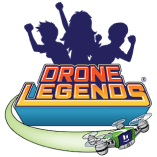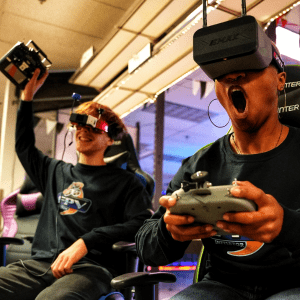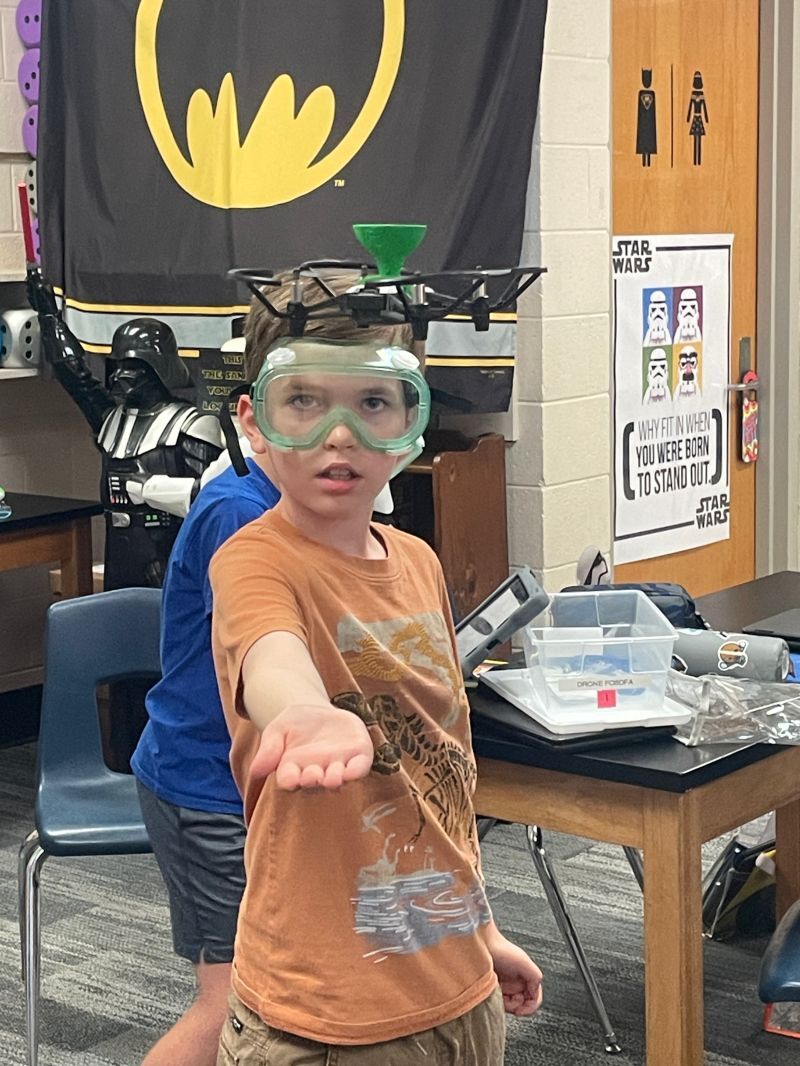About the Author: Carrie Robledo is an educator and co-founder of Girls Leading Innovation With Drones and Engineering, or GLIDE. You can connect with Carrie on Twitter.
I have used drones in the classroom for five years, and back in those early days, there were essentially no resources (nothing like Drone Legends) and very little guidance. I now know that we were on the cusp of what has become a pretty thrilling movement in education: drones in schools are increasingly used to facilitate hands-on STEM learning for kids of all ages.
Now, I’m considered one of the early adopters of drone technology in learning, and I’ve learned a ton along the way. Here are my insights (for teachers at any level) for how to make the most of drones in the classroom – enjoy!
Drones are Exciting for Kids of Any Age
First, drones are cool. Plain and simple. In a day when teachers struggle to capture and hold students’ attention, drones are like a magic trick. They’re physical, vivid, surprising, and exciting. They have the same “wow” effect on kids of all ages, from elementary school students to middle school students to high school students (and beyond).
Even better, drones don’t require kids to sit in front of a computer screen, like many forms of education technology today. Rather, they encourage communication, collaboration, peer-to-peer connection, and more. Drones offer an endless trove of great learning experiences.
There’s Always Something New for Teachers to Learn
Myself and my colleagues who saw the potential in drones early on had to be brave about it. Even five years ago, drone technology wasn’t as mainstream as it is now. There was a pretty steep learning curve, and not all of us would even self-describe as “tech-people.” But we saw the magic of drones firsthand and realized it could transform classroom experiences. So we went for it.
We started learning all about drones: the basics of flight, STEM-related concepts and principles, operation, connection to education standards, etc. And, spoiler alert, we’re still learning every day. Drone technology itself has evolved, but so has an understanding of how to use drones in the classroom. It’s pretty amazing what other teachers using Drone Legends are doing – if you want to see real-world examples, you can check out the Drone Legends Instagram account.
Truly, everyday’s a learning experience, not just for the kiddos but for us. And I love that.
Troubleshooting Drones
Drones create a great troubleshooting opportunity, which is important to encourage critical thought and perseverance in students. Drones give immediate feedback: what went right? What went wrong? And sometimes the results of trying something new are puzzling… and funny.
I’ll give an example: we were doing a dragon egg race in our GLIDE program a couple of weeks ago. The girls in our drone program decided to add more eggs. What none of us anticipated was that the added weight caused the propellers to fly off. It was too much for them and they went flinging into the ceiling and around the room.
To be clear: these are very lightweight pieces of plastic so there wasn’t any danger. But we had this very real and relevant illustration of weight capacity, tensile strength, and tons of other rich engineering concepts right in front of us.
Technology Always Changes for Edtech Tools
Edtech tools have become super popular, and new ones are always emerging. Education technology expert David Warlick explains that “We need technology in every classroom and in every student and teacher’s hand, because it is the pen and paper of our time, and it is the lens through which we experience much of our world.”
The students we have today are digital natives: they use technology all day every day. This makes education technology tools even more important. Which also means that it’s important for teachers to stay in the know about what’s new, what’s changing, and what’s available to support learning.
Whether it’s hardware or software-based, it’s clear that edtech will continue to be a prevalent part of our classroom environments. The more foundational knowledge that educators can establish, the easier it will be to adapt.
Drones Offer a Different Kind of Engagement
Another lesson after five years of using drones in the classroom is that drones offer a different kind of engagement. Regardless of the topic, lesson, or even subject (thought usually it’s STEM-related), drones engage students in a hands-on way.
We say “hands-on” all of the time as though it’s the holy grail of learning experiences, but it shouldn’t be dismissed as cliche. The truth is, there are kids who learn differently, and whether it’s a second language learner, a kinesthetic learner, a student who is neuroatypical, or any other scenario, drones can make a vital connection. Students who may be difficult, even impossible, to engage otherwise will come alive when a drone lifts off.
Space is the Biggest Constraint
File this under “things I wish I’d known”: space (not outer space – classroom space) is the biggest challenge you’ll have to overcome when getting a drone program off the ground. All puns intended.
Planning for space, allocating space, dividing up space: you need to really think through how you’ll cleverly use space to fly drones indoors. To be clear, you don’t need massive amounts of space like a giant gym or atrium. We fly drones in a regular sized classroom, in libraries, in STEM labs. It’s very possible, but you need to plan for it.
Another “space related” dynamic with drones is storage. If you have specific, labeled areas for all of your drone gear, it makes it much easier to run a drone program. We like to bundle things: the Drone Legends student guide, drone, charger, tablets. Then each student group can pick up and get started right away.
The Importance of Having Roles in Group Learning
Drone programs are great for group learning, and this is one area in which having a drone curriculum has been game-changing.
In Drone Legends, students take on different roles. Being able to assign roles in any hands-on learning experience is essential to making sure students stay engaged, the experience is orderly, chaos doesn’t ensue, there is solid classroom management/enforceability, and expectations are set and clear.
We review both the classroom rules and student roles before every lesson so the students know their job titles and responsibilities.
This structure goes a long way in making things easier for you as a teacher.
If you want to investigate more how we’ve implemented classroom management standards specifically for drone programs, read my last Drone Legends blog here.
The Value of Reflections to Evaluate Real Learning
For those unfamiliar with the world of STEM drones & learning, it may feel like a fad or mostly play. But we see it as meaningful learning experiences that yield measurable results for student outcomes.
One way we ensure the big ideas stick is we use reflections. Reflection times uncover what students can relay about their experience, which is important to qualify learning. We can then look at that data and see if there’s some extrapolation to the trends for science, math skills, etc.
Drone Learning = Real World Growth
As we continue to use drones in the classroom, it is interesting to see the evolution of drones in the real world. For example, when we first started our lessons, we talked about the possibilities of drones being used to deliver goods. Now, here we are five years later talking to students from our local high school, who work as drone delivery pilots at the grocery store.
Our early instincts about drones were spot on – and I couldn’t be more happy that teachers nationwide are getting on board with drone learning to foster real-world growth.
To learn more about Drone Legends, contact our team.
Up next: Check out 10 Ways to Use Drones in the Classroom




